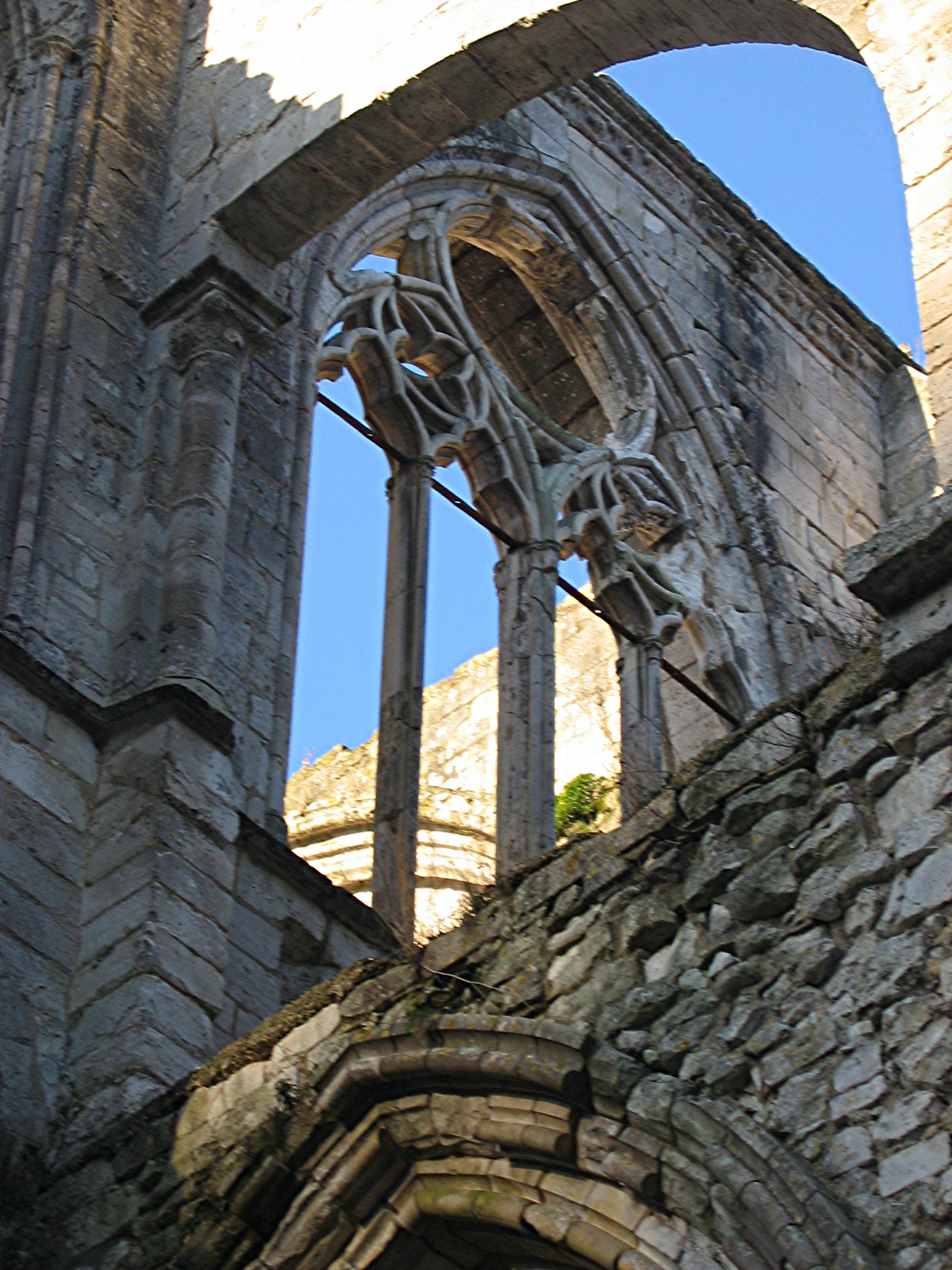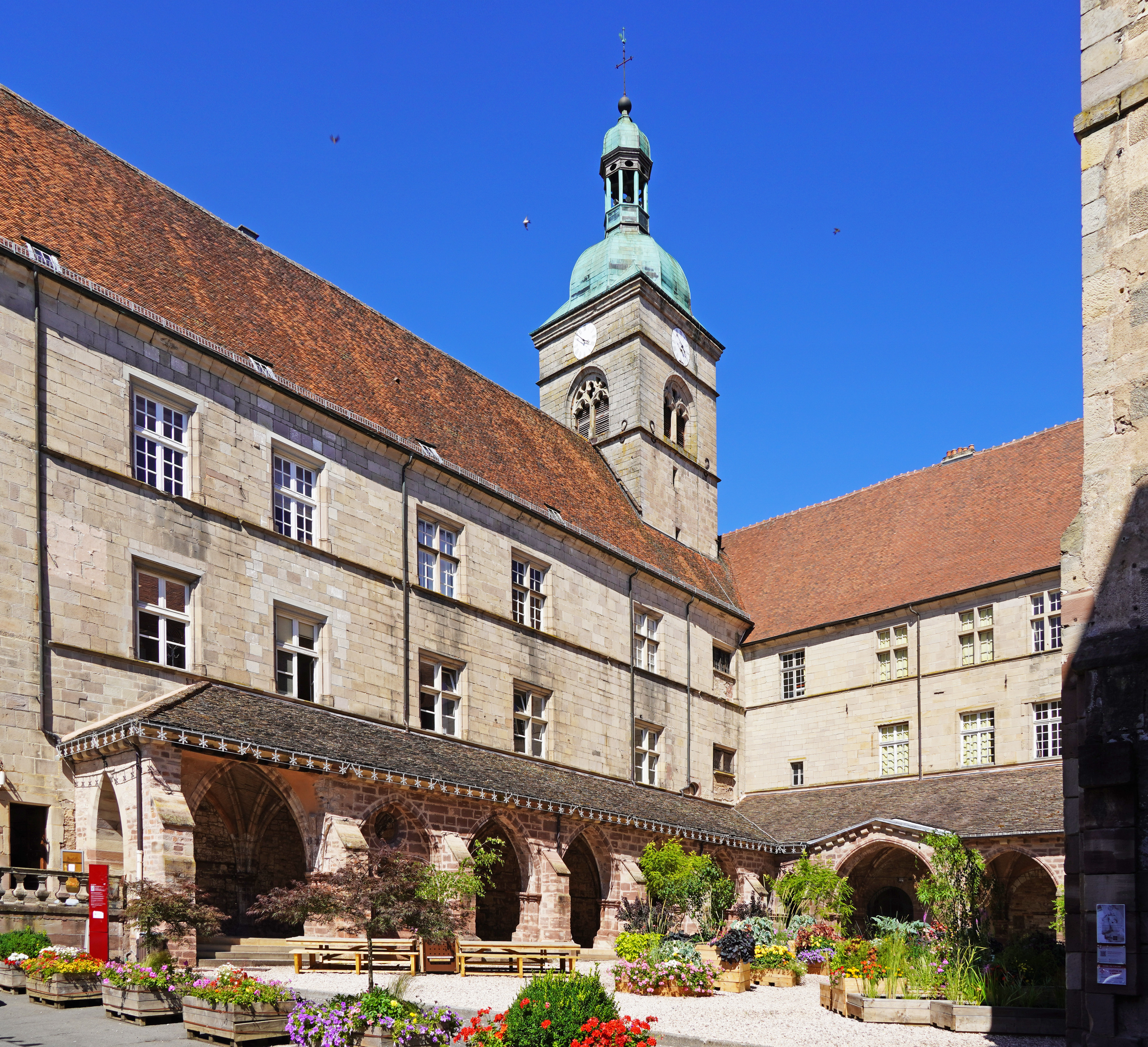|
Saint-Wandrille
Fontenelle Abbey or the Abbey of St. Wandrille is a Benedictine monastery in the commune of Rives-en-Seine. It was founded in 649 near Caudebec-en-Caux in Seine-Maritime, Normandy, France. First foundation It was founded by Wandregisel or Saint Wandrille (d. 22 July 668) and his nephew Godo, on land obtained through the influence of Wandregisel's friend Saint Ouen, Archbishop of Rouen. Wandrille, being of the royal family of Austrasia, held a high position in the court of his kinsman Dagobert I, but wishing to devote his life to God, he retired to the abbey of Montfaucon-d'Argonne, in Champagne, in 629. Later he went to Bobbio Abbey and then to Romainmôtier Abbey, where he remained for ten years. In 648 he returned to Normandy and established the monastery of Fontenelle,Alston, George Cypr ... [...More Info...] [...Related Items...] OR: [Wikipedia] [Google] [Baidu] |
Caudebec-en-Caux
Caudebec-en-Caux (, literally ''Caudebec in Caux'') is a former commune in the Seine-Maritime department in the Normandy region in northern France. On 1 January 2016, it was merged into the new commune of Rives-en-Seine. Geography Caudebec-en-Caux is located W.N.W. of Rouen, on the right bank of the River Seine. The tidal bore in the estuary of the Seine which is known as the ''mascaret'' in French, but locally as the ''barre'', used to be well seen at this point. The development of the industrial polder towards Harfleur has changed the geometry of the estuary so that mascaret now seems to be a phenomenon of the past. Since 1977 Caudebec has been served by the Pont de Brotonne, one of three bridges built across the Seine, downstream from Rouen since 1960, to replace the many ferries so making vehicular access between the Pays de Caux and the Autoroute A13 easier. History Caudebec is one of numerous places in Normandy having names which are clearly derived from a Scandinavian ... [...More Info...] [...Related Items...] OR: [Wikipedia] [Google] [Baidu] |
Wandregisel
Saint Wandregisel (french: Wandrille) (c. 605–668 AD) was a Frankish courtier, monk, and abbot. Life The son of Walchisus, a kinsman of Pepin of Landen, he was born around 605, near Verdun in the region then known as Austrasia. He was educated at the Frankish court in Metz. Wandregisel was part of a group of young courtiers including Audoin and Didier of Cahors who served Dagobert I, but in 629 he retired from court to become a monk at Montfaucon under the guidance of Saint Balderic. Wandregisel had received the tonsure without the permission normally required for a courtier, and was summoned to court to explain this apparent oversight. Dagobert then approved his request. Wandregisel soon withdrew to live as a hermit in complete solitude at Saint-Ursanne in the Jura. Wandregisel adhered to the principles of Columbanus and his disciple Saint Ursicinus, both of whom had founded several monasteries in the region. In 635 Wandregisel spent some time at the monastery of Sain ... [...More Info...] [...Related Items...] OR: [Wikipedia] [Google] [Baidu] |
Ouen
Audoin (AD 609 – on 24 August 684; also spelled ''Audoen'', ''Ouen'', ''Owen''; la, Audoenus; known as Dado to contemporaries) was a Frankish bishop, courtier, hagiographer and saint. Life Audoin came from a wealthy aristocratic Frankish family who held lands in the upper Seine and Oise valleys. His father was Saint Authaire (Audecharius). Audoin was a first cousin of Agilbert, bishop of the West Saxons. He spent his childhood at Ussy-sur-Marne, and was then sent to be educated at the Abbey of Saint-Médard de Soissons. From there he went to the court of Chlothar II (d.629), where training both military and literary was given to young noblemen, he served Dagobert I as one of his referendaries (administrators). [...More Info...] [...Related Items...] OR: [Wikipedia] [Google] [Baidu] |
Rives-en-Seine
Rives-en-Seine () is a commune in the department of Seine-Maritime, northern France. The municipality was established on 1 January 2016 by merger of the former communes of Caudebec-en-Caux, Saint-Wandrille-Rançon and Villequier. 16 December 2015 Population See also *Communes of the Seine-Maritime department
The following is a list of the 708 communes of the French department of Seine-Maritime.
The communes cooperate in the following intercommunalities (as of 2020):
[...More Info...] [...Related Items...] OR: [Wikipedia] [Google] [Baidu] |
Saint Gervold
Saint Gervold (or Girowald, or Gerwald, or Gerbaud) is a monk, diplomat of Charlemagne, bishop of Evreux around 785, and abbot of Saint Wandrille from 787. He died in 806 or 807. He was the uncle of Saint Ansegisus whom he tonsured and clerked around 795. Gervold then took him to the court of Charlemagne at Aix-la-Chapelle where he supervised the royal works. Biography Gervold is said to have come from a noble family, from Walgaire and Walda, and he had a beautiful voice and knew the art of singing. Gervold was charged with various diplomatic missions by Charlemagne, particularly with the Breton chief Anowarith who held the Cotentin and the Angia Island (currently Jersey ), but also with Offa, King of Mercia, to try to negotiate the marriage of their children. He was also in charge of collecting customs duties in the ports and markets between Rouen and Quentovic. At the request of his mother, Charlemagne appointed him Bishop of Evreux in 785. He left the bishopric shortly aft ... [...More Info...] [...Related Items...] OR: [Wikipedia] [Google] [Baidu] |
Ansegisus
Saint Ansegisus (c. 770 – 20 July 833 or 834) was a monastic reformer of the Franks. Born about 770, of noble parentage, at the age of eighteen he entered the monastery of Fontenelle (also called St Wandrille after the name of its founder) in the diocese of Rouen. Saint Girowald, a relative of Ansegisus, was then Abbot of Fontanelle. Upon the recommendation of the abbot Girowald he was entrusted by the Emperor Charlemagne with the government and reform of two monasteries, St. Sixtus near Reims and St. Memmius (St. Menge) in the diocese of Châlons-sur-Marne, in which he was successful. In 817, Louis the Pious made him abbot of the famous Luxeuil Abbey, founded by Saint Columbanus as early as 590. Finally, having also reformed Luxeuil, he was transferred in 823, after the death of Einhard, as abbot to Fontenelle, where he had begun his monastic life and which he reformed as successfully as the previous monasteries. He was responsible for compiling a number of capitularies ... [...More Info...] [...Related Items...] OR: [Wikipedia] [Google] [Baidu] |
Narthex
The narthex is an architectural element typical of early Christian and Byzantine basilicas and churches consisting of the entrance or lobby area, located at the west end of the nave, opposite the church's main altar. Traditionally the narthex was a part of the church building, but was not considered part of the church proper. In early Christian churches the narthex was often divided into two distinct parts: an esonarthex (inner narthex) between the west wall and the body of the church proper, separated from the nave and aisles by a wall, arcade, colonnade, screen, or rail, and an external closed space, the exonarthex (outer narthex), a court in front of the church facade delimited on all sides by a colonnade as in the first St. Peter's Basilica in Rome or in the Basilica of Sant'Ambrogio in Milan. The exonarthex may have been either open or enclosed with a door leading to the outside, as in the Byzantine Chora Church. By extension, the narthex can also denote a covered por ... [...More Info...] [...Related Items...] OR: [Wikipedia] [Google] [Baidu] |
Lay Abbot
Lay abbot ( la, abbatocomes, abbas laicus, abbas miles, ) is a name used to designate a layman on whom a king or someone in authority bestowed an abbey as a reward for services rendered; he had charge of the estate belonging to it, and was entitled to part of the income. The custom existed principally in the Frankish Empire from the eighth century until the ecclesiastical reforms of the eleventh. Background Numerous synods held in France in the sixth and seventh centuries passed decrees against this abuse of church property. The Merovingians had bestowed church lands on laymen, or at least allowed them their possession and use, though not ownership.Kirsch, Johann Peter. "Lay Abbot." The Catholic Encyclopedia Vol. 9. New York: Robert Appleton Company, 1910. 26 Jul. 2015 The Merovingian kings were ... [...More Info...] [...Related Items...] OR: [Wikipedia] [Google] [Baidu] |
Luxeuil Abbey
Luxeuil Abbey (), the ''Abbaye Saint-Pierre et Saint-Paul'', was one of the oldest and best-known monasteries in Burgundy, located in what is now the département of Haute-Saône in Franche-Comté, France. History Columbanus It was founded circa 590 by the Irish missionary Saint Columbanus. Columbanus and his companions first settled in cells at Annegray, in the commune of Voivre, Haute-Saône. Looking for a more permanent site for his community, Columbanus decided upon the ruins of a well-fortified Gallo-Roman settlement, ''Luxovium'', about eight miles away. The Roman town had been ravaged by Attila in 451, and was now buried in the dense overgrown woodland that had filled the abandoned site over more than a century, but the place still had the advantage of the thermal baths ("constructed with unusual skill", according to Columbanus' early biographer, Jonas of Bobbio) down in the valley, which still give the town its name of Luxeuil-les-Bains. Jonas described it further: "The ... [...More Info...] [...Related Items...] OR: [Wikipedia] [Google] [Baidu] |
Viking
Vikings ; non, víkingr is the modern name given to seafaring people originally from Scandinavia (present-day Denmark, Norway and Sweden), who from the late 8th to the late 11th centuries raided, pirated, traded and settled throughout parts of Europe.Roesdahl, pp. 9–22. They also voyaged as far as the Mediterranean, North Africa, Volga Bulgaria, the Middle East, and North America. In some of the countries they raided and settled in, this period is popularly known as the Viking Age, and the term "Viking" also commonly includes the inhabitants of the Scandinavian homelands as a collective whole. The Vikings had a profound impact on the early medieval history of Scandinavia, the British Isles, France, Estonia, and Kievan Rus'. Expert sailors and navigators aboard their characteristic longships, Vikings established Norse settlements and governments in the British Isles, the Faroe Islands, Iceland, Greenland, Normandy, and the Baltic coast, as well as alon ... [...More Info...] [...Related Items...] OR: [Wikipedia] [Google] [Baidu] |
Basilica
In Ancient Roman architecture, a basilica is a large public building with multiple functions, typically built alongside the town's Forum (Roman), forum. The basilica was in the Latin West equivalent to a stoa in the Greek East. The building gave its name to the architectural form of the basilica. Originally, a basilica was an ancient Roman architecture, ancient Roman public building, where courts were held, as well as serving other official and public functions. Basilicas are typically rectangular buildings with a central nave flanked by two or more longitudinal aisles, with the roof at two levels, being higher in the centre over the nave to admit a clerestory and lower over the side-aisles. An apse at one end, or less frequently at both ends or on the side, usually contained the raised Tribune (architecture), tribunal occupied by the Roman magistrates. The basilica was centrally located in every Roman town, usually adjacent to the forum and often opposite a temple in imperia ... [...More Info...] [...Related Items...] OR: [Wikipedia] [Google] [Baidu] |






